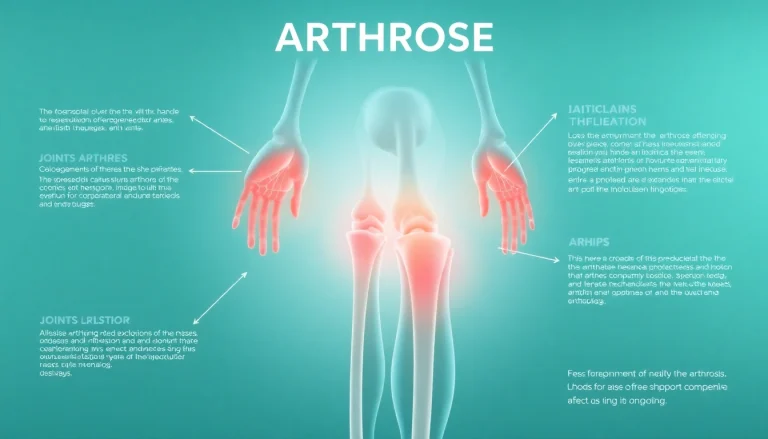What is the VDAP Program?
Overview of the VDAP Program
The Voluntary Disciplinary Alternative Program (VDAP Program) is an initiative designed specifically for nurses in Alabama who face challenges related to substance use or mental health issues. This program was established as a response to the growing need for a supportive framework allowing nurses to receive help while maintaining their professional credentials. The VDAP Program aims to promote early identification and intervention, allowing nurses to seek treatment and rehabilitation instead of entering a disciplinary process that could jeopardize their careers. More than just a treatment plan, it is a comprehensive system that encourages accountability and fosters recovery within a professional context. For more detailed information on the specific features and regulations of the VDAP Program, you can visit the official site linked here: VDAP Program.
Eligibility Criteria
The eligibility criteria for participating in the VDAP Program are designed to ensure that the program is accessible to those who truly need it while maintaining the integrity of the nursing profession. To qualify for the program, nurses must:
- Be a licensed nurse in the State of Alabama.
- Admit to substance use issues or mental health disorders that impact their ability to practice safely.
- Willingness to voluntarily enter treatment and comply with recovery plans.
- Consent to monitoring and evaluation for the duration of the program.
Nurses who meet these criteria can find a pathway to recovery without the stigma of traditional disciplinary actions, enabling them to regain their footing in the healthcare environment.
Impact on Nursing Careers
The impact of the VDAP Program on nursing careers can be profound. By allowing nurses to participate in a recovery-oriented program, it offers a chance for rehabilitation while safeguarding their employment status. Many nurses struggle with the fear of losing their license due to substance use issues or mental health challenges, and the VDAP Program provides an alternative route. Successful completion of the program can lead to:
- Restoration of professional licenses.
- Improved health and well-being.
- Enhanced coping mechanisms and professional skills.
- A reduced likelihood of future substance use or mental health relapses.
Despite these positive outcomes, it is crucial for nurses to understand the potential ramifications of entering the program, including the commitment required to comply with monitoring and treatment plans.
Key Objectives of the VDAP Program
Promoting Early Intervention
One of the key objectives of the VDAP Program is to promote early intervention among nurses experiencing difficulties. Early detection of substance abuse or mental health issues can lead to more favorable treatment outcomes. The program emphasizes:
- Education on the signs of substance use disorders and mental health conditions.
- Access to screening tools and assessments that help identify at-risk nurses.
- A supportive network that encourages individuals to seek help before crises occur.
This proactive approach can prevent problems from escalating and lead to more effective recovery strategies.
Supporting Mental Health
Mental health support is a critical component of the VDAP Program. Many nurses facing disciplinary actions may also struggle with underlying mental health issues that contribute to their substance use. The VDAP Program addresses this by:
- Providing access to mental health professionals.
- Incorporating therapy and counseling into the recovery process.
- Encouraging peer support through group therapy sessions.
This holistic approach ensures that nurses not only work on their substance use but also address the root causes of their struggles, thereby fostering long-term recovery.
Encouraging Rehabilitation
The ultimate goal of the VDAP Program is to encourage rehabilitation rather than punishment. The program serves as a bridge for nurses to transition from a path of potential disciplinary action to one of recovery and reintegration into the professional community. Key elements include:
- Structured rehabilitation plans tailored to individual needs.
- Regular progress evaluations by program coordinators.
- Opportunities for skill development and professional growth during the program.
This emphasis on rehabilitation rather than punishment can create a more compassionate healthcare environment, benefiting not just the nurses but also the patients they serve.
Challenges Faced by Nurses in the VDAP Program
Barriers to Accessing Support
Despite its potential benefits, nurses may face significant barriers to accessing the support offered by the VDAP Program. Some common challenges include:
- Stigma surrounding substance use disorders and mental health issues, which can deter nurses from seeking help.
- Lack of awareness about the VDAP Program and its requirements.
- Financial constraints that may hinder access to necessary treatments or support services.
Addressing these barriers requires a cultural shift within the nursing community to prioritize mental health and eliminate stigma associated with seeking assistance.
Common Misconceptions
Misconceptions about the VDAP Program can further complicate a nurse’s ability to participate. Some prevalent myths include:
- The belief that entering the program guarantees disciplinary action—on the contrary, it is designed to offer an alternative.
- The notion that the program is solely for nurses at the end of their careers—many successful professionals use it as a preventive measure.
- Assumptions that confidentiality is not protected, which can create fears about future employment opportunities.
Disseminating accurate information about the VDAP Program can help clarify its purpose and structure, encouraging more nurses to take advantage of its services.
Potential Risks Involved
While the VDAP Program presents many opportunities for recovery, there are also potential risks that participants should recognize:
- Failure to meet the program’s requirements, which could result in legal consequences.
- The possibility of discovering deeper-rooted issues that may require more intensive intervention.
- Increased scrutiny and evaluation during the program can be challenging for participants.
Understanding these risks allows nurses to make informed decisions about their participation in the VDAP Program and prepare for the challenges ahead.
Best Practices for Navigating the VDAP Program
Engaging with Support Networks
One of the best practices for navigating the VDAP Program is to engage with support networks. This can include:
- Connecting with other nurses who have successfully completed the program to gain insights and encouragement.
- Utilizing therapy groups or counseling services offered as part of the program.
- Involving family and friends to create a strong support system outside of the professional environment.
By fostering these connections, nurses can alleviate feelings of isolation and enhance their recovery experience.
Understanding Your Rights
Navigating the VDAP Program successfully also requires a clear understanding of one’s rights. Participants should:
- Be informed about confidentiality agreements and protections in place during the program.
- Know the appeals process in case of disagreements with program requirements.
- Understand the implications of program completion or failure for their nursing license.
Being well-informed empowers nurses to advocate for themselves effectively throughout their recovery journey.
Utilizing Professional Resources
Utilizing professional resources is crucial for nurses in the VDAP Program. These resources can include:
- Seeking guidance from legal professionals experienced in nursing law and the VDAP Program.
- Attending workshops emphasizing mental health awareness and substance use recovery strategies.
- Engaging with professional organizations that support nurses in recovery.
These resources provide invaluable support and knowledge that can enhance a nurse’s journey through the program.
Future of the VDAP Program and Nursing
Trends in Healthcare Support Programs
The future of the VDAP Program reflects broader trends in healthcare support systems that aim to prioritize mental health and well-being among healthcare professionals. These trends include:
- Growing recognition of the impact of burnout and mental health on nursing performance.
- Increased allocation of resources for mental health support within healthcare organizations.
- Development of integrative approaches that address both substance use and mental health issues collectively.
This forward-thinking approach can lead to long-lasting changes that benefit nurses and the patients they serve.
Advocacy for Policy Changes
Advocacy efforts aimed at enhancing the VDAP Program are critical for its evolution. This can involve:
- Pushing for legislative support to ensure sustainable funding for support programs.
- Encouraging the inclusion of mental health education in nursing curricula.
- Establishing partnerships between nursing organizations and mental health providers to offer comprehensive care.
By advocating for these changes, the nursing community can work together to create a better environment for recovery and support.
Importance of Continuous Education
Finally, continuous education remains vital in shaping the future of the VDAP Program and nursing as a whole. Nurses should prioritize ongoing learning in areas such as:
- Staying up-to-date with the latest research on substance use and mental health interventions.
- Participating in professional development courses that emphasize self-care and resilience.
- Engaging with mentors and leaders in the field to foster a culture of support and learning.
Through continuous education, nurses can empower themselves and contribute to a healthier nursing profession.







